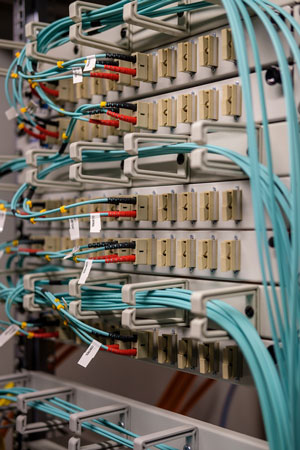By: John Shepler
If your business’s broadband internet is causing you problems, you might want to consider dedicated point-to-point lines. Let’s explore what they are and how they can benefit you.
Dedicated means you have exclusive access to the bandwidth you pay for.
You might wonder, “Isn’t all bandwidth dedicated if I’m paying for it?”
Here’s where it gets a little complicated. Broadband providers often advertise services with phrases like “bandwidth up to 300 Mbps.” While the service might be capable of 300 Mbps, your speed tests may not always reflect that.
The reason is that these affordable broadband services offer shared bandwidth. You share the same access line with multiple users, including other businesses and consumers. During periods of low demand, your speeds will be high. However, when everyone is uploading or downloading simultaneously, the bandwidth gets divided, resulting in slower speeds for everyone.
If you require the entire bandwidth for your business, you need a dedicated service. With dedicated bandwidth, there are no other users competing for your line. Any unused bandwidth remains idle until you need it.
Dedicated Internet Access (DIA) can significantly enhance the reliability of your internet service. DIA provides a dedicated line from your company to your Internet Service Provider (ISP), where it then connects to the internet.
While this improves stability, it doesn’t guarantee perfect performance. The internet itself is inherently a shared service, prone to occasional congestion and outages. For even greater resilience, consider dedicated point-to-point fiber service.
Dedicated Point to Point Fiber
Dedicated lines have been around for a long time, using copper pairs and older telecom fiber known as SONET (Synchronous Optical Network). Today, the most cost-effective option is Ethernet over Fiber (EOF).
Fiber optic Ethernet services, sometimes referred to as Metro Ethernet Fiber, seamlessly integrate with your servers through standard Ethernet interfaces. Unlike the internet, you choose the two locations you want to connect. The provider installs ports at both ends, creating a continuously available, dedicated point-to-point fiber connection between them. Service plans typically start at 10 Mbps or 100 Mbps, but can readily scale up to 10 Gbps, with some metropolitan areas offering 100 Gbps bandwidth.
The advantages of dedicated point-to-point (P2P) lines include consistent bandwidth unaffected by other customers’ usage. The link is inherently more secure than the internet due to its private nature. Additionally, bandwidth is generally symmetrical, meaning upload and download speeds are equal. This is crucial for businesses that frequently upload and download large files to remote servers. Most shared bandwidth services have asymmetrical speeds, favoring downloads with significantly faster rates than uploads.
What are ideal uses for dedicated P2P fiber? The traditional application is connecting multiple business locations. It allows your headquarters and branch offices to share the same private network, making communication with someone across the country feel as seamless as talking to someone down the hall. Remote servers in colocation facilities or your own data center can also benefit from extending the Local Area Network (LAN) using dedicated P2P. Today, this extends to the cloud, encompassing public, private, and hybrid cloud services.
If your business requires the enhanced stability and performance that dedicated point-to-point fiber lines offer, it’s worth exploring the fiber optic services available in your area.


